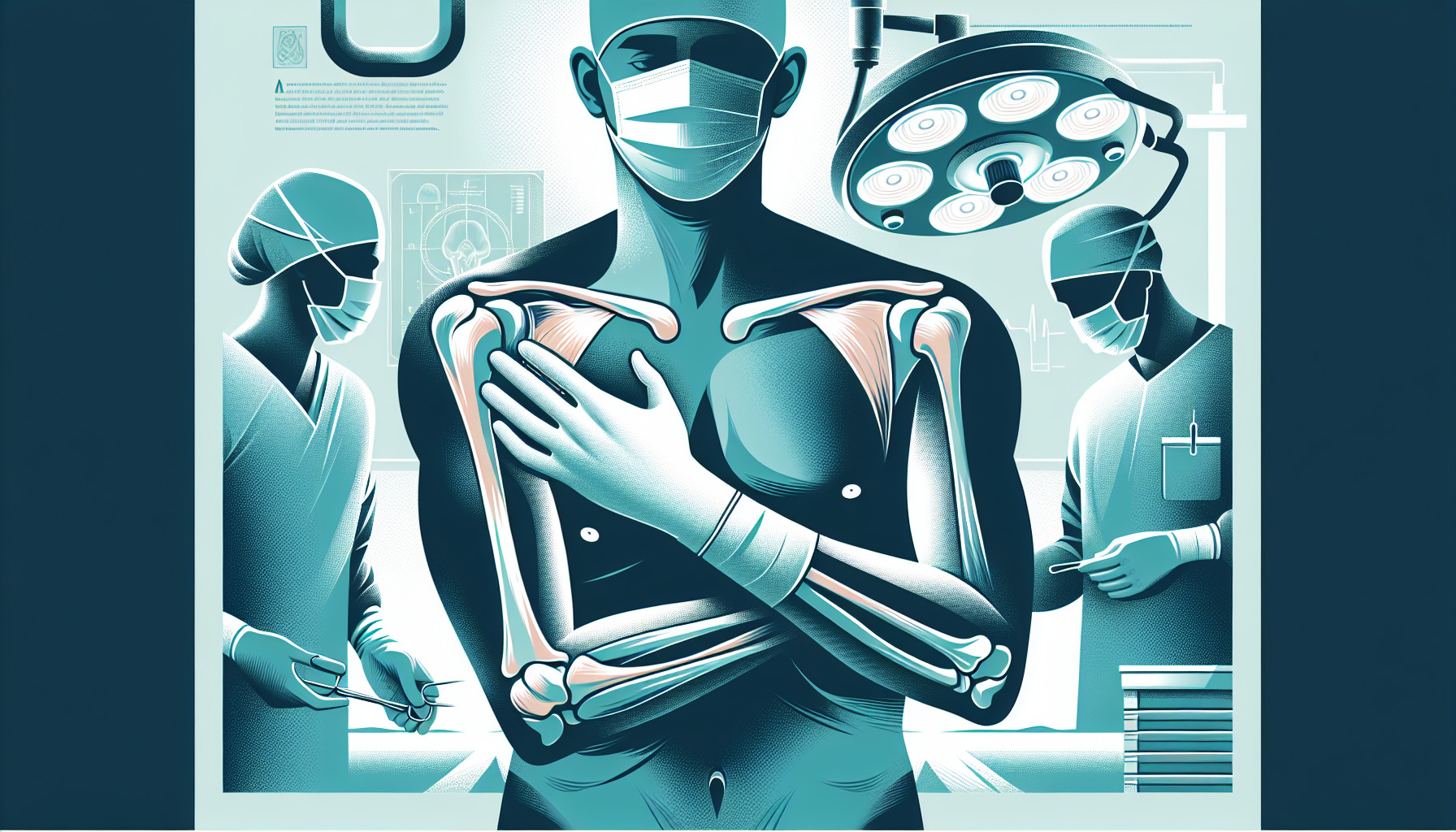Our Summary
This research paper is about the increasing number of patients undergoing total shoulder replacement surgery, and consequently, the rise in patients experiencing infections related to the artificial joint. The study emphasizes the need for doctors to recognize the signs of these infections, understand the common bacteria causing them, and be familiar with the processes for diagnosing a shoulder joint infection. The research offers a review of the latest studies on the typical symptoms, the common bacteria involved in shoulder infections, how they differ from those involved in knee and hip replacements, and the various tests and procedures used to identify infections.
FAQs
- What are the common signs and symptoms of a prosthetic joint infection following a total shoulder arthroplasty?
- How do the common pathogens in shoulder prosthetic joint infections differ from those found in total knee and hip pathogens?
- What diagnostic images, tests, and procedures can aid in the identification of a prosthetic joint infection after a total shoulder arthroplasty?
Doctor’s Tip
One helpful tip a doctor might tell a patient about shoulder replacement is to closely monitor for any signs of infection, such as increased pain, redness, swelling, warmth, or drainage from the surgical site. It is important to seek medical attention promptly if any of these symptoms occur, as early detection and treatment of a prosthetic joint infection can help prevent serious complications. Additionally, following post-operative care instructions, including proper wound care and antibiotic therapy, can help reduce the risk of infection after shoulder replacement surgery.
Suitable For
Patients who are typically recommended for shoulder replacement surgery are those who have severe shoulder pain and stiffness that cannot be managed with other treatments such as physical therapy, medications, or injections. Common conditions that may warrant shoulder replacement surgery include osteoarthritis, rheumatoid arthritis, post-traumatic arthritis, rotator cuff tears, and avascular necrosis.
Additionally, patients who have not had success with previous shoulder surgeries or treatments may also be candidates for shoulder replacement. It is important for patients to have realistic expectations about the potential outcomes of surgery and to be in overall good health to undergo the procedure.
Overall, the decision to recommend shoulder replacement surgery is made on a case-by-case basis by the patient’s orthopedic surgeon after a thorough evaluation of their medical history, symptoms, and imaging studies.
Timeline
Before shoulder replacement:
- Patient experiences chronic shoulder pain, stiffness, and limited range of motion
- Patient undergoes various non-surgical treatments such as physical therapy, medication, and cortisone injections
- Imaging tests such as X-rays, MRI, and CT scans are performed to assess the extent of damage to the shoulder joint
- Orthopedic surgeon recommends shoulder replacement surgery as a last resort option
After shoulder replacement:
- Patient undergoes shoulder replacement surgery, which involves removing damaged bone and cartilage and replacing it with artificial components
- Patient experiences post-operative pain, swelling, and stiffness, which can be managed with medication and physical therapy
- Patient gradually regains strength and range of motion in the shoulder through rehabilitation exercises
- Patient is advised to avoid certain activities and follow-up regularly with their surgeon to monitor the success of the surgery and potential complications.
What to Ask Your Doctor
Some questions a patient should ask their doctor about shoulder replacement include:
- What are the potential risks and complications associated with shoulder replacement surgery?
- How long is the recovery process and what can I expect during the rehabilitation period?
- Will I need to take any special precautions or make lifestyle changes after the surgery?
- What type of prosthetic will be used in my shoulder replacement and why was this specific type chosen for me?
- How long can I expect the prosthetic to last and what signs should I look out for that may indicate a problem with the prosthetic?
- What is the likelihood of developing a prosthetic joint infection after shoulder replacement surgery and what steps can I take to minimize this risk?
- What symptoms should I watch for that may indicate an infection in my shoulder joint?
- What is the treatment protocol if an infection does occur after shoulder replacement surgery?
- How often will I need to follow up with you after the surgery and what types of monitoring will be done to ensure the shoulder joint is functioning properly?
- Are there any specific activities or movements that I should avoid after shoulder replacement surgery to prevent complications or dislocation of the prosthetic joint?
Reference
Authors: Klott J, Brolin TJ. Journal: Orthop Clin North Am. 2024 Apr;55(2):257-264. doi: 10.1016/j.ocl.2023.09.006. Epub 2023 Oct 20. PMID: 38403371
